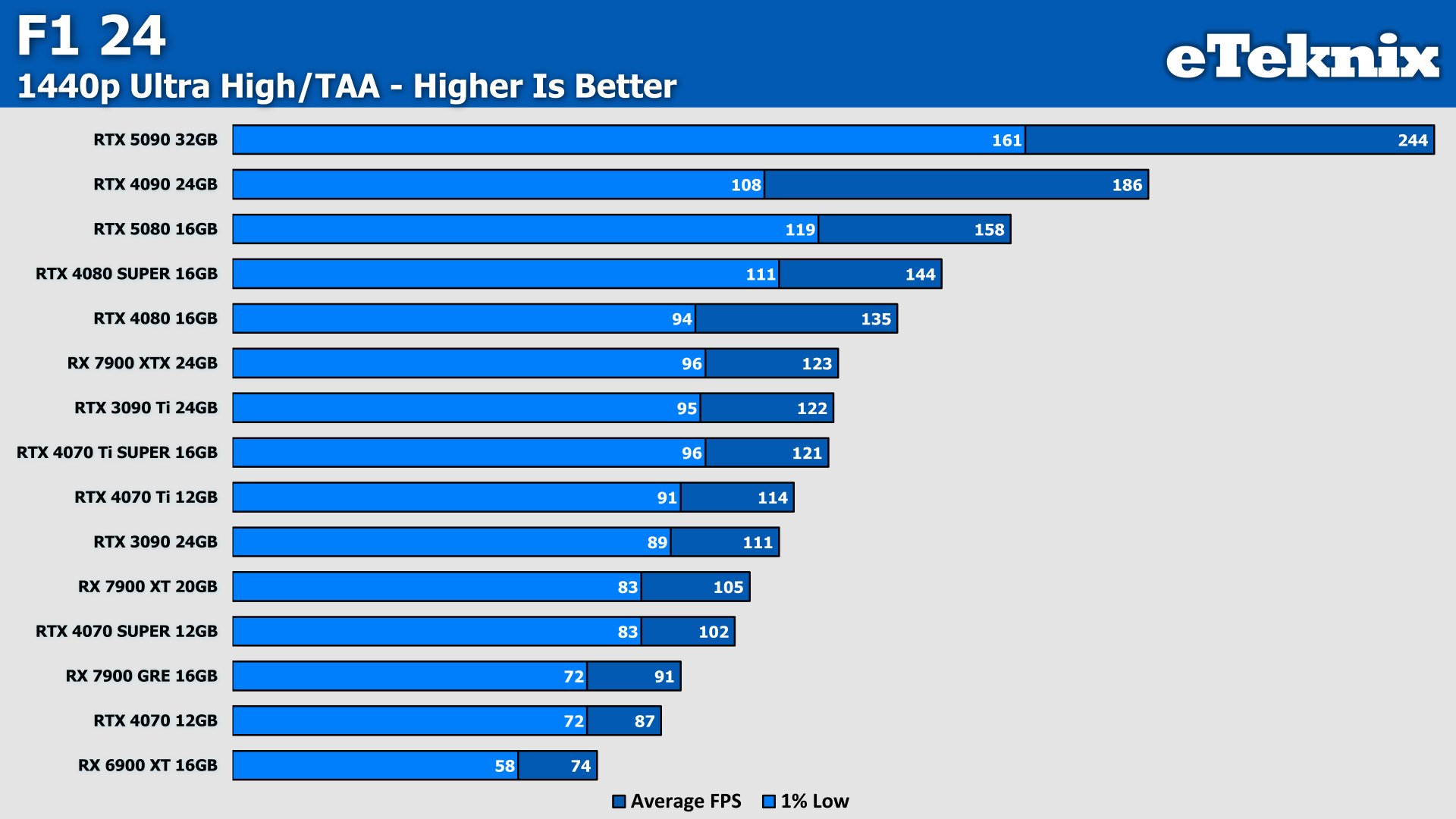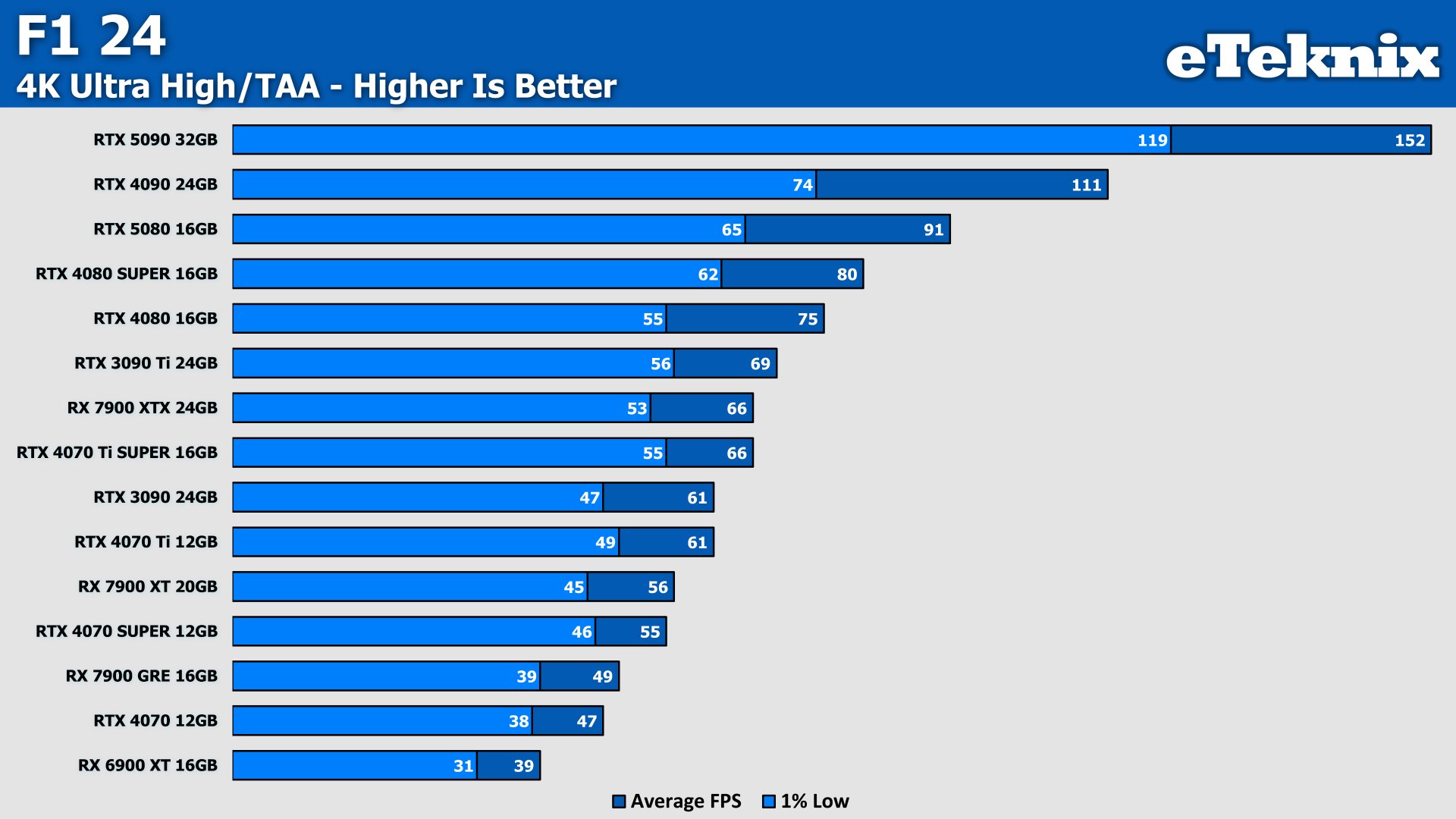Nvidia GeForce RTX 5080 Founders Edition Review
Ray Tracing F1 24

F1 24 brings the thrill of Formula 1 racing to life with its implementation of ray tracing, adding a new layer of realism to the on-track action. Ray-traced reflections accurately capture the gleaming surfaces of the cars and the vibrant colours of the race tracks, while ray-traced shadows add depth and detail to every scene. The introduction of ray-traced ambient occlusion further enhances the visual fidelity, providing more realistic and nuanced shading. Even the crowds in the grandstands benefit from ray tracing, with more detailed and dynamic lighting.

In F1 24 at 1440p, the RTX 5080 puts in a strong performance, starting with a 17% improvement in the averages and an even more impressive 27% boost in the lows compared to the RTX 4080, highlighting smoother gameplay in critical moments. Moving to the 4080 SUPER, the gap narrows slightly, with the 5080 leading by 10% in the averages and 7% in the lows, still retaining a notable advantage. Against the RTX 4090, the 5080 falls behind by 15% in the averages, but it manages to come out ahead in the lows with a 10% improvement, offering a more consistent experience in some scenarios. Finally, when facing off against the 7900 XTX, the 5080 solidifies its position with a 28% lead in the averages and a 14% advantage in the lows.

Then at 4K, the RTX 5080 continues to deliver notable gains. Compared to the RTX 4080, it achieves a 21% improvement in the averages and an 18% boost in the lows, maintaining its lead as the better option for higher resolutions. Against the 4080 SUPER, the margins are smaller, with the 5080 ahead by 14% in the averages and just 5% in the lows, showing a diminishing but still present advantage. When stacked against the RTX 4090, the 5080 falls behind by 18% in the averages and 12% in the lows, demonstrating that NVIDIA’s former flagship still holds strong in raw raytracing-based performance. Finally, when compared to the 7900 XTX, the 5080 comes out ahead once more, with a 38% lead in the averages and a 23% advantage in the low.








